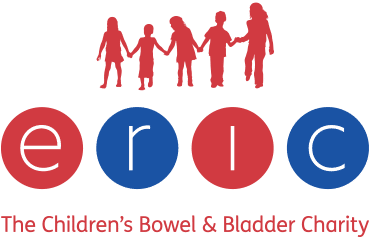Flowchart – Constipation
Every child must be fully assessed using the appropriate Continence Assessment Form. If constipation is identified, follow the flowchart below to ensure the child receives the correct assessment, treatment and management.
The ‘pop-up’ information boxes suggest who might deliver each intervention. In England the local CCG (Clinical Commissioning Group) can clarify who is commissioned to do so. Information to support the commissioning of children’s continence services can be found in the PCF’s Paediatric Continence Commissioning Guide. In Scotland and Wales, ask your GP, Health Visitor or School Health Nurse for advice on who provides local continence care.
National Clinical Constipation Pathway for Primary Care for Children
NHS England has produced guidance to support clinicians in the prevention and management of constipation in children and young people.
This includes a clinical pathway and a series of videos featuring an ERIC Nurse specialist, aimed at health professionals and the families they support.
National Clinical Constipation Pathway for Primary Care for Children. (Opens in new window)
Training events
Share this page
Constipation identified by GP
Constipation identified by School Health Nursing / Health Visiting / Children’s Community Nursing / Learning Disability Team
GP to inform/refer to School Health Nursing / Health Visiting / Children’s Community Nursing / Learning Disability Team
Child to be referred to GP
CHILD TO BE ASSESSED for underlying organic cause:
• Check appearance of anus and surrounding area to exclude anorectal anomaly
• Check lower limb neurology and appearance of spine to exclude neurological link e.g. spinal anomaly
• Check for abdominal mass
• Check for faltering growth
• See 'Constipation in kids' poster for visual guide to red flags
If concerns refer as appropriate
No concerns. Idiopathic constipation diagnosed
ASSESS FOR FAECAL IMPACTION: use a combination of history taking and physical examination – look for overflow soiling and/or faecal mass. DO NOT use rectal examination unless specifically indicated
Found or suspected
Disimpaction
• Demystify, reassure, educate
• Provide Advice for Children with Constipation for information including toileting advice
• Disimpact following NICE Guidance – use oral paediatric macrogol in increasing doses until watery stool passed
• Write to GP to request macrogol laxative if necessary – see Template Letter for GP re Macrogols
• Provide A Parent’s Guide to Disimpaction,
• How to Use Macrogol Laxatives
• Offer to contact school re potential absence - see Template Letter for School re Disimpaction
Not impacted
Maintenance
• Demystify, reassure, educate
• Offer Poo Diary
• Signpost to ERIC for further information/reassurance and advice on toileting, children’s disposable pads etc
• Provide leaflet: Advice for Children with Constipation
• Do not use dietary interventions alone as first-line treatment
• Continue oral macrogol titrating dose to achieve at least one soft stool per day. Write to GP to request macrogol laxative if necessary – see Template Letter for GP re Macrogols
• Provide family with How to Use Macrogol Laxatives
• Reassure regarding safety of long term use of laxatives
• Advise family to maintain adequate fluid intake and dietary fibre
• Advise daily physical activity
• Advise regular toileting programme – offer Toileting Reward Chart
• Advise re management of any Smearing
Symptoms ongoing?
Refer to Paediatric Continence Service or equivalent local service using Referral Form.
Symptoms improved?
Provide information and leaflets as appropriate and discharge.
Further interventions
• Child to be offered a range of rectal interventions to manage ongoing bowel emptying problems and prevent soiling
• Stepwise approach to be used, offering smallest and least invasive options first – see ERIC Poo Ladder
• Write to GP to request chosen intervention - see Template Letter for GP re rectal interventions
• See Links to Bowel Equipment Product Information (PDF) for prescribing information
• Provide leaflet ERIC's Guide for Children living with Complex Bladder and Bowel Problems (PDF)
• GP to ensure child receives annual review - by GP or by Paediatric Continence Service or equivalent
